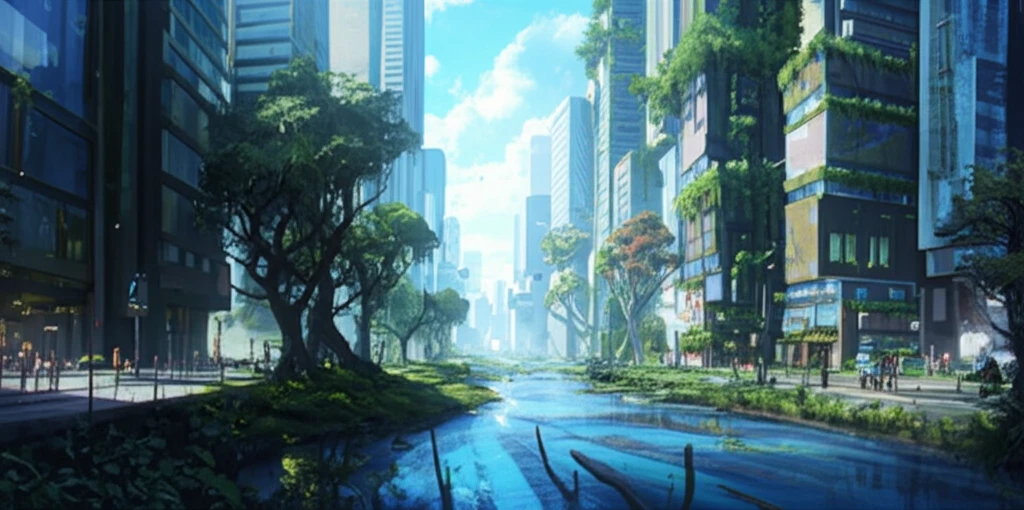
Green Cities: How Urban Planning Can Save Our Planet (and Our Sanity)
"Discover how the green infrastructure concept is transforming cityscapes and promoting eco-friendly urban development for a healthier, more sustainable future."
The world is rapidly urbanizing, placing immense strain on resources and demanding innovative solutions for sustainable living. The concept of the "compact city" has emerged as a powerful approach to address these challenges, aiming to concentrate development and reduce urban sprawl. However, simply packing people together isn't enough. We need to ensure our cities are also green, offering access to nature and its vital benefits.
This is where the concepts of green infrastructure and ecosystem services come into play. Green infrastructure refers to strategically planned networks of natural and semi-natural areas within urban environments, designed to deliver a wide range of ecosystem services. These services include everything from cleaner air and water to recreational spaces and climate regulation.
But how do we integrate these concepts into urban planning effectively? How can we create cities that are both compact and green, balancing the needs of a growing population with the imperative to protect our environment? This article delves into these critical questions, exploring the principles of green infrastructure and ecosystem services, and how they can be applied to create more sustainable, resilient, and livable urban environments.
The Greenprint: Key Strategies for Compact and Green Cities

So, what are the essential elements of a successful compact and green city? Research points to several key strategies:
- Integration: Weave green spaces into the urban fabric. Integrate green infrastructure into existing gray infrastructure like transport networks and buildings.
- Connectivity: Create green corridors. Link separate green spaces to form ecological networks, allowing for the movement of wildlife and the flow of ecosystem services.
- Multi-Functionality: Design for multiple benefits. Ensure green spaces provide a range of services, from recreation and habitat to stormwater management and climate regulation.
The Greener Tomorrow: Investing in Sustainable Urban Futures
Creating compact and green cities is not merely an environmental imperative, but an investment in our collective well-being. By embracing innovative urban planning strategies, prioritizing green infrastructure, and valuing ecosystem services, we can build cities that are not only sustainable but also healthier, more resilient, and more enjoyable places to live. It's time to reimagine our urban landscapes and pave the way for a greener, more vibrant future.
